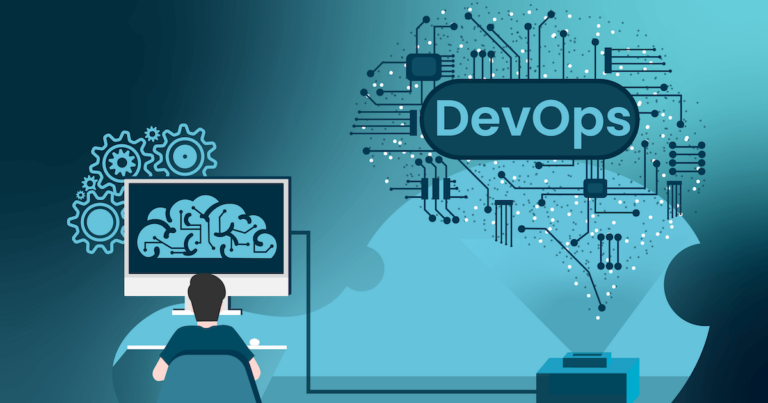More and more organizations are adopting cloud-native applications because of major benefits including, faster app development, scalability, and less vendor lock-in. IT leaders are investing heavily in cloud initiatives for various reasons, including digital transformation and Cloud-native is a shift in their IT and digital business transformation philosophy. They increase agility, and velocity in modern solutions while also achieving go-to-market faster with the more advanced and innovative solutions.
In the digital era, businesses want to stay ahead of the competition to deliver the better product and the better processes for improving customer experience. Although, many enterprises fail with their digital initiatives because of lacking the right tools, technologies, and expertise. They are sometimes disappointed with the simple rehosting of applications because of the high costs. Cloud-native platforms (CNPs) are empowering such enterprises to leverage the full capabilities of the cloud and deliver much faster results on their digital initiatives.
A Gartner report suggests that two-thirds of the organizations are building platforms – Digital & Advanced using cloud-native application architecture. They build and run scalable applications in dynamic environments such as public, private, and hybrid cloud and can add more value to cloud-native app development from Hybrid-cloud architecture.
Also, in one of the top strategic technology trends identified for 2022, cloud-native platforms (CNPs) are expected to serve as the foundation for more than 95% of new digital initiatives by 2025, up from less than 40% today.
What is Cloud-Native?
Cloud-native applications are built using independent loosely coupled microservices that are deployed on cloud platforms. It takes the advantages of PaaS platforms and API integration, including DevOps practices and Microservices architecture. The key pillars of cloud-native development are Containers & Kubernetes, Microservices, DevSecOps, and Continuous integration/Continuous delivery (CI/CD).
Key Trends in Cloud-Native App Development
Let’s discuss some emerging tech trends to design a cloud-native application architecture robust and modern in a cloud environment.
Kubernetes and Containers
CIOs, CTOs, and IT leaders have the main objective of developing and deploying business application faster to make better decisions and support next gen technologies such as big data analytics, Internet of things (IoT), artificial intelligence (AI)/machine learning (ML) and edge computing. Container orchestration system with Kubernetes (K8s), helps them to automate, manage, and deploy containerized applications. CI/CD approach ensures that cloud-native applications are running up to date with the utmost efficiency. By adopting container orchestration with Kubernetes, they are gaining momentum to run the containers at the edge in cloud-agnostic environments.
Serverless
In serverless computing, developers can entirely focus on building, running, and optimizing cloud-native applications most effectively and efficiently. It allows enterprises to off-load their complexities be it scaling, provisioning, patching, or scheduling if they maintain the infrastructure appropriately. Reduced operational cost and reduced development cost are the most popular reasons to adopt serverless in organizations. It bridges the gap between development and production environments.
Microservices
As cloud-native applications heavily rely on microservices architecture and microservices make these applications more flexible, resilient, and easiest to deploy. Most of the organizations are using or shifting to microservices for better agility. They simplify product development and make the services independent from each other with the microservices architecture. Developers usually run each microservices in a container on a cloud-based server and use secure APIs to connect microservices.
DevSecOps
Today, businesses have realized that traditional methods and tools don’t work for new technologies and cloud-based systems. They are increasingly adopting DevSecOps to secure their applications and systems. Hence, it is emerging as the main method of securing cloud-native applications. DevSecOps fully integrates with cloud capabilities for development, operations, and security practices. Also, the approach to DevSecOps helps developers to bridge the gap between code and product security in the cloud.
Infrastructure as Code (IaC)
IaC enhances the capabilities of cloud-native applications. It reduces the developers’ workload and makes infrastructure provisioning & automation smooth. IaC and DevOps approach help developers to accelerate the end-to-end software delivery lifecycle. Getting greater agility and higher scalability, IaC significantly reduces development and deployment cost and mitigates the risks, if any. Businesses can launch their new product with enhanced features and fasten time-to-market.
Cloud-Native Maturity Model
Throughout the cloud journey, organizations find themselves in one of the several stages and further they are progressing towards cloud-native environment.
Stage 0 – On Premise
Companies host their data centers in-house or in off-site co-locations. They end up spending more to buy, maintain, and upgrade hardware. In the end, they have a number of significant costs such as infra cost, hardware maintenance, and setup costs associated with installing and operating IT Infrastructure in-house. There is a lack of accessibility and scalability to accommodate growing business needs.
Now, with the cloud service provider offering high bandwidth and scalability, organizations can replace all the above costs with a single monthly bill while opting for cloud platforms like AWS, Microsoft Azure and GCP.
Stage 1 – Cloud Enabled
It is the first step towards cloud adoption and Cloud enabled applications are also known as cloud-based applications. These applications are designed to run on a particular operating system, within a specific environment. For example, if you have moved your in-house web applications to AWS or Azure servers, then you have the “cloud-enabled” applications. After the migration, these applications are refactored to use virtual resources. Businesses can reduce their capital expenditure with cloud enabled applications. Some of the benefits are-
- Cost Reduction
- Mobility
- Enhanced Security
- Disaster Recovery and Backup
Stage 2 – Cloud Optimized
These applications are described as a hybrid application between the applications that are migrated to the cloud and the applications that are built in the cloud. Most of the organizations live in a cloud optimized environment. Here, applications can be replicated to create more efficient deployment workflow and developers can easily write the code, push to staging/development servers, and then have the code from development pushed to production. companies take additional advantages of cloud optimized applications such as continuous delivery, high scaling, and redundancy. Some of the benefits are-
- Improved Collaboration
- DevOps and CI/CD
- Application Portability
- Resiliency
Stage 3 – Cloud-Native
Cloud-native applications are architected from the ground up to run in a public cloud such as AWS, Azure, or GCP using cloud-based technologies. It is the new way of architecting applications and infrastructure, where services are broken into smaller and smaller pieces, and reusing services wherever possible. Cloud-native applications are faster to deploy and they can easily communicate with each other because of the existence of microservices architecture. Organizations just have to pay for what they use and increase their application availability. Some of the benefits are-
- Reduced Cost
- No Vendor lock-In
- Faster Release
- Auto-provisioning
Conclusion
Throughout the years, the trend of cloud-first has been changing from migration of applications to cloud-native. Organizations want to move on cloud-native platform because of launching new products and services to market quickly. They are increasingly finding a new way to deliver business value and innovations from their existing cloud strategies. It is true that the “Lift and shift” model has been best fit for monolithic applications and architecture- but being in the cloud-native world has its own benefits to the business.
At Successive Cloud, we empower organizations to build and run scalable applications in modern dynamic environments such as public, private or hybrid cloud and encourage them to collect together the various practices, processes and technologies to produce best business value.




